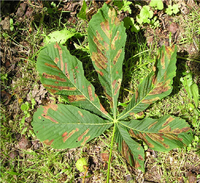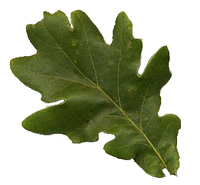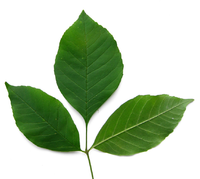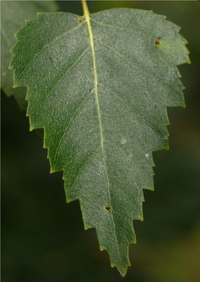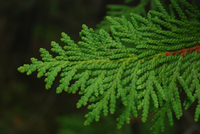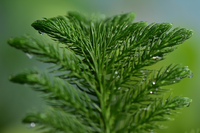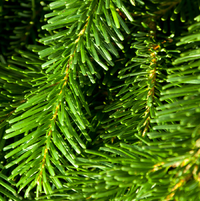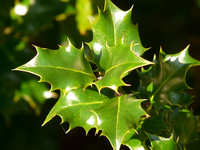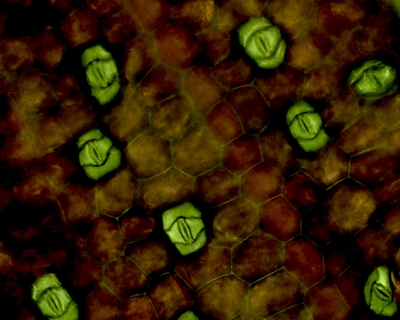Difference between revisions of "Leaf"
(→Key Stage 4) |
|||
| (19 intermediate revisions by the same user not shown) | |||
| Line 15: | Line 15: | ||
|[[File:OakLeaf.png|center|200px]] | |[[File:OakLeaf.png|center|200px]] | ||
|- | |- | ||
| − | |These are the '''leaves''' on a | + | | style="height:20px; width:200px; text-align:center;" |These are the '''leaves''' on a Horse Chestnut Tree. |
| − | |This is a '''leaf''' from a | + | | style="height:20px; width:200px; text-align:center;" |This is a '''leaf''' from a Beech Tree |
| − | |This is an | + | | style="height:20px; width:200px; text-align:center;" |This is an Oak Tree '''leaf'''. |
|- | |- | ||
|[[File:AshLeaf.png|center|200px]] | |[[File:AshLeaf.png|center|200px]] | ||
| Line 23: | Line 23: | ||
|[[File:CedarLeaf.png|center|200px]] | |[[File:CedarLeaf.png|center|200px]] | ||
|- | |- | ||
| − | |3 '''leaves''' from an | + | | style="height:20px; width:200px; text-align:center;" |3 '''leaves''' from an Ash Tree. |
| − | |A | + | | style="height:20px; width:200px; text-align:center;" |A Silver Birch Tree '''leaf'''. |
| − | |These are the '''leaves''' of a | + | | style="height:20px; width:200px; text-align:center;" |These are the '''leaves''' of a Cedar Tree |
|- | |- | ||
|[[File:FirLeaf.png|center|200px]] | |[[File:FirLeaf.png|center|200px]] | ||
| Line 31: | Line 31: | ||
|[[File:HollyLeaf.png|center|200px]] | |[[File:HollyLeaf.png|center|200px]] | ||
|- | |- | ||
| − | |These are the '''leaves''' of a | + | | style="height:20px; width:200px; text-align:center;" |These are the '''leaves''' of a Fir Tree. |
| − | |These | + | | style="height:20px; width:200px; text-align:center;" |These Pine Tree '''leaves''' are called Pine Needles. |
| − | |These are the '''leaves''' of a | + | | style="height:20px; width:200px; text-align:center;" |These are the '''leaves''' of a Holly Tree. |
|} | |} | ||
| − | + | ==Key Stage 2== | |
| + | ===Meaning=== | ||
| + | The leaf is an [[organ]] in a [[plant]] used to make food by [[photosynthesis]]. | ||
| + | |||
| + | ===Adaptations=== | ||
| + | : The '''leaf''' is often wide and thin to collect as much sunlight as possible. The more sunlight it collects the more food it can make. | ||
| + | : The '''leaf''' has tubes called 'veins' inside it which carry the food away from the '''leaves''' to the [[root]]s and [[flower]] and to carry [[water]] into the '''leaf''' from the [[root]]s. | ||
| + | |||
| + | ==Key Stage 3== | ||
| + | ===Meaning=== | ||
| + | [[File:LeafCrossSection.png|right|300px|thumb|A cross section of a [[leaf]].]] | ||
| + | A [[leaf]] is an [[organ]] in the [[Shoot System|shoot system]] of a [[plant]] that uses [[photosynthesis]] to [[Producer|produce]] food for the [[plant]]. | ||
| + | |||
| + | ===About Leaves=== | ||
| + | : The [[Cell (Biology)|cells]] in '''leaves''' have many [[chloroplast]]s inside them for [[photosynthesis]]. | ||
| + | : '''Leaves''' produce food that is sent to the [[root]]s through the [[phloem]] which is part of a [[Plant Vein|plant vein]] that carries sap. | ||
| + | '''Leaves''' have many tissues inside them found in layers: | ||
| + | *Upper Epidermis - A layer of cells at the top of the leaf that make a waxy cuticle on top to keep the [[leaf]] waterproof. | ||
| + | *[[Palisade Tissue]] - A layer of [[Palisade Cell|palisade cells]] which have lots of chloroplasts in them for [[photosynthesis]]. | ||
| + | *[[Spongy Mesophyll Tissue]] - A layer of [[Spongy Mesophyll Cell|spongy mesophyll cells]] that have irregular shapes to allow [[air]] to pass through the [[leaf]]. | ||
| + | *Lower Epidermis - A layer of [[Cell (Biology)|cells]] at the bottom of the [[leaf]] with [[Stoma|stomata]] to allow [[air]] into and out of the [[leaf]]. | ||
| + | {| class="wikitable" | ||
| + | |- | ||
| + | |[[File:LeafCrossSectionDiagram.png|center|600px]] | ||
| + | |- | ||
| + | | style="height:20px; width:600px; text-align:center;" |A [[diagram]] of the cross section of a [[leaf]] showing [[Palisade Cell]]s, [[Spongy Mesophyll Cell]]s and [[Guard Cell]]s. | ||
| + | |} | ||
| + | |||
| + | ===Adaptations of Leaves=== | ||
| + | : '''Leaves''' have a waxy cuticle to stop [[water]] escaping. | ||
| + | : '''Leaves''' contain [[Cell (Biology)|cells]] with many [[chloroplast]]s for [[photosynthesis]]. | ||
| + | : '''Leaves''' have [[air]] gaps between the [[Spongy Mesophyll Cell|spongy mesophyll cells]] to allow [[Gas Exchange in Plants|gas exchange]]. | ||
| + | : '''Leaves''' usually have more [[Guard Cell|guard cells]] and [[Stoma|stomata]] on the underside (lower epidermis) than the top side (upper epidermis). These close when the [[leaf]] gets [[dehydrate]]d, stopping [[Carbon Dioxide|carbon dioxide]] getting into the [[leaf]] which stops them using [[water]] for [[photosynthesis]]. | ||
| + | |||
| + | {| class="wikitable" | ||
| + | |- | ||
| + | |[[File:Stomata.png|center|400px]] | ||
| + | |- | ||
| + | | style="height:20px; width:400px; text-align:center;" |The under side of a [[leaf]] showing [[Guard Cell|guard cells]] and [[Stoma|stomata]]. | ||
| + | |} | ||
| + | |||
| + | ==Key Stage 4== | ||
| + | ===Meaning=== | ||
| + | A [[leaf]] is an [[organ]] in the [[Shoot System|shoot system]] of a [[plant]] that uses [[photosynthesis]] to [[Producer|produce]] food for the [[plant]]. | ||
| + | |||
| + | ===About Leaves=== | ||
| + | : The [[Cell (Biology)|cells]] in '''leaves''' have many [[chloroplast]]s inside them for [[photosynthesis]]. | ||
| + | : '''Leaves''' produce food that is sent to the [[root]]s through the [[phloem]] by [[translocation]]. | ||
| + | '''Leaves''' have many [[tissue]]s inside them found in layers: | ||
| + | *Upper Epidermis - A layer of cells at the top of the leaf that make a waxy cuticle on top to keep the [[leaf]] waterproof. | ||
| + | *[[Palisade Tissue]] - A layer of [[Palisade Cell|palisade cells]] which have lots of chloroplasts in them for [[photosynthesis]]. | ||
| + | *[[Spongy Mesophyll Tissue]] - A layer of [[Spongy Mesophyll Cell|spongy mesophyll cells]] that have irregular shapes to allow [[air]] to pass through the [[leaf]]. | ||
| + | *Lower Epidermis - A layer of [[Cell (Biology)|cells]] at the bottom of the [[leaf]] with [[Stoma|stomata]] to allow [[air]] into and out of the [[leaf]]. | ||
| + | {| class="wikitable" | ||
| + | |- | ||
| + | |[[File:LeafCrossSectionDiagram.png|center|600px]] | ||
| + | |- | ||
| + | | style="height:20px; width:600px; text-align:center;" |A [[diagram]] of the cross section of a [[leaf]] showing [[Palisade Cell]]s, [[Spongy Mesophyll Cell]]s and [[Guard Cell]]s. | ||
| + | |} | ||
| + | |||
| + | ===Adaptations for Photosynthesis=== | ||
| + | : '''Leaves''' are usually wide and thin to provide a large area to collect sunlight. | ||
| + | : '''Leaves''' contain [[Cell (Biology)|cells]] with many [[chloroplast]]s for [[photosynthesis]]. | ||
| + | : '''Leaves''' have [[air]] gaps between the [[Spongy Mesophyll Cell|spongy mesophyll cells]] to allow [[Gas Exchange in Plants|gas exchange]]. | ||
| + | : [[Xylem Tissue]] transports [[water]] to the '''leaves''' for [[photosynthesis]]. | ||
| + | : '''Leaves''' have [[Guard Cell|guard cells]] around a [[stoma]] which closes when the [[leaf]] gets [[dehydrate]]d, stopping [[Carbon Dioxide|carbon dioxide]] getting into the [[leaf]]. This stops them using [[water]] for [[photosynthesis]] and helps protect the plant from further dehydration. | ||
| + | : '''Leaves''' usually have more [[Guard Cell|guard cells]] and [[Stoma|stomata]] on the underside (lower epidermis) than the top side (upper epidermis) because [[stoma|stomata]] on the top side would lose [[water]] more quickly, increasing the rate of dehydration. | ||
Latest revision as of 10:37, 8 June 2019
Contents
Key Stage 1
Meaning
A leaf is part of a plant that is joined to the stem above the ground.
About Leaves
Leaves are usually green and shaped like a blade or a needle. Some plants have red leaves and in some plants the leaves fall off in autumn.
Examples
| These are the leaves on a Horse Chestnut Tree. | This is a leaf from a Beech Tree | This is an Oak Tree leaf. |
| 3 leaves from an Ash Tree. | A Silver Birch Tree leaf. | These are the leaves of a Cedar Tree |
| These are the leaves of a Fir Tree. | These Pine Tree leaves are called Pine Needles. | These are the leaves of a Holly Tree. |
Key Stage 2
Meaning
The leaf is an organ in a plant used to make food by photosynthesis.
Adaptations
- The leaf is often wide and thin to collect as much sunlight as possible. The more sunlight it collects the more food it can make.
- The leaf has tubes called 'veins' inside it which carry the food away from the leaves to the roots and flower and to carry water into the leaf from the roots.
Key Stage 3
Meaning
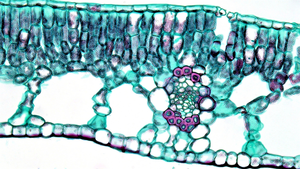
A cross section of a leaf.
A leaf is an organ in the shoot system of a plant that uses photosynthesis to produce food for the plant.
About Leaves
- The cells in leaves have many chloroplasts inside them for photosynthesis.
- Leaves produce food that is sent to the roots through the phloem which is part of a plant vein that carries sap.
Leaves have many tissues inside them found in layers:
- Upper Epidermis - A layer of cells at the top of the leaf that make a waxy cuticle on top to keep the leaf waterproof.
- Palisade Tissue - A layer of palisade cells which have lots of chloroplasts in them for photosynthesis.
- Spongy Mesophyll Tissue - A layer of spongy mesophyll cells that have irregular shapes to allow air to pass through the leaf.
- Lower Epidermis - A layer of cells at the bottom of the leaf with stomata to allow air into and out of the leaf.
| A diagram of the cross section of a leaf showing Palisade Cells, Spongy Mesophyll Cells and Guard Cells. |
Adaptations of Leaves
- Leaves have a waxy cuticle to stop water escaping.
- Leaves contain cells with many chloroplasts for photosynthesis.
- Leaves have air gaps between the spongy mesophyll cells to allow gas exchange.
- Leaves usually have more guard cells and stomata on the underside (lower epidermis) than the top side (upper epidermis). These close when the leaf gets dehydrated, stopping carbon dioxide getting into the leaf which stops them using water for photosynthesis.
| The under side of a leaf showing guard cells and stomata. |
Key Stage 4
Meaning
A leaf is an organ in the shoot system of a plant that uses photosynthesis to produce food for the plant.
About Leaves
- The cells in leaves have many chloroplasts inside them for photosynthesis.
- Leaves produce food that is sent to the roots through the phloem by translocation.
Leaves have many tissues inside them found in layers:
- Upper Epidermis - A layer of cells at the top of the leaf that make a waxy cuticle on top to keep the leaf waterproof.
- Palisade Tissue - A layer of palisade cells which have lots of chloroplasts in them for photosynthesis.
- Spongy Mesophyll Tissue - A layer of spongy mesophyll cells that have irregular shapes to allow air to pass through the leaf.
- Lower Epidermis - A layer of cells at the bottom of the leaf with stomata to allow air into and out of the leaf.
| A diagram of the cross section of a leaf showing Palisade Cells, Spongy Mesophyll Cells and Guard Cells. |
Adaptations for Photosynthesis
- Leaves are usually wide and thin to provide a large area to collect sunlight.
- Leaves contain cells with many chloroplasts for photosynthesis.
- Leaves have air gaps between the spongy mesophyll cells to allow gas exchange.
- Xylem Tissue transports water to the leaves for photosynthesis.
- Leaves have guard cells around a stoma which closes when the leaf gets dehydrated, stopping carbon dioxide getting into the leaf. This stops them using water for photosynthesis and helps protect the plant from further dehydration.
- Leaves usually have more guard cells and stomata on the underside (lower epidermis) than the top side (upper epidermis) because stomata on the top side would lose water more quickly, increasing the rate of dehydration.
